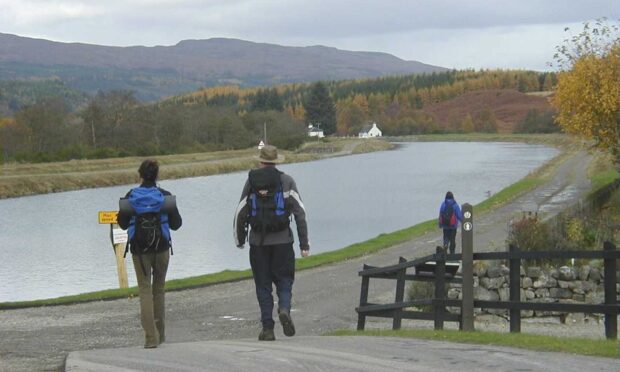The internet blew up this week after one user pointed out the Highland boundary fault line was straight.
And not only that – but the Loch Ness monster was hidden in the depths of one of the lochs.
There were some wild conspiracy theories being shared, after a post by user @ipod facto described the fault line as a gap.
While it might strange to seasoned Scots, straight lines appear to be something of a geographical anomaly for many on the internet.
Ipod Facto said: “I think they should close the gap and then Europe and Africa could become an unstoppable mega continent.”
Another theory was that the Great Glen was vortex to Japan, and this could be the reason Nessie is often spotted on the other side of the world.
cool shot of this area from space! https://t.co/3dLy17xVoL
— Mama Luigi (@Its_MamaLuigi) April 26, 2023
User @PinsonRing wrote: “Yeah so it’s part of our redundancy system. If Northern Ireland ever decides to become part of an independent Ireland then we’ve set the whole thing to blow, the west coast of Scotland falls into the sea and makes a tidal wave that destroys them.”
Some praised God, while others had a more critical voice.
User @tarojq, wrote: “That’s just the boundary line of the texture. Just a rendering issue! Slightly lazy on the part of the developers but some measure of this is inevitable.”
It is of course not really a mystery at all – it is the Highland boundary fault line and it has been in existence for… well, longer than Nessie.
The fault line is visible from space, just like the Great Wall of China. Only the fault line is somewhat straighter.
Most prominent fault in the UK
has anyone in scotland noticed this? pretty straight line. let me know if youd like me to look into it some more. pic.twitter.com/XCImgDAZqn
— ipod facto (@IdahoBones) April 25, 2023
The Geographical Society refer to the Highland boundary or Great Glen fault line as a “huge valley in the Scottish Highlands”. Of course anyone who has spent any time in the Highlands will categorically know we do that have valleys, we have glens.
The society explains that the glen was eroded by glaciers more than 10,000 years ago.
It writes: “These glaciers carved the valley below present day sea level, forming a series of deep lakes, the largest and most famous of which is Loch Ness.
“The Great Glen hosts the most prominent fault in the British Isles, the Great Glen Fault.”
The fault line was formed towards the end of the Caledonian Orogeny around 430-390 million years ago. The line cuts diagonally across the Highlands from Fort William to Inverness.
Still moving
The society continued: “Like other major fault zones around the world, the Great Glen has a long history of reactivation.
“Although it is known that the north west and south east sides of the fault are moving in opposite directions, there is currently no agreement on how far they have moved.
“Because the geology on either side of the fault cannot be matched up prior to the Devonian period, it is thought that the displacement could be at least as far as the exposed length of the fault on mainland Scotland.
The Great Glen has been known to be a major fault zone for well over a century.
But it was not until the work of William Kennedy in the 1930s – published in 1946 – that its significance was recognised.
Kennedy showed that the fault had moved sideways – as a so-called strike-slip or wrench fault.
The society added: “”It was one of the first such structures to gain wide acceptance and in the years before plate tectonics was established, was important evidence for large-scale lateral earth movements.”
A walking route – the Great Glen Way – has been established, with one local man Pawel Cymbalista holding the current record for the fast time for an unaccompanied run on the route.

Conversation